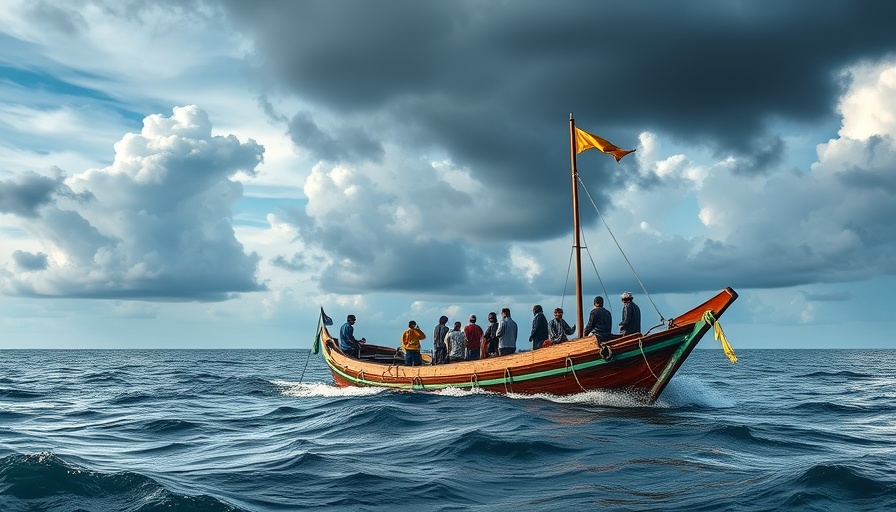
Revolutionizing Coastal Protection: The Greenbelt Initiative in the Philippines
The Philippines, often battered by fierce typhoons and flooding, is turning to an innovative and environmentally friendly solution to safeguard its coastlines. In the province of Negros Occidental, the local government has pioneered a project that revitalizes coastal ecosystems through the creation of buffer zones known as the "coastal greenbelt." This remarkable initiative involves the restoration of mangroves and beach forests, which serve as natural barriers against erosion and serve to protect vulnerable coastal communities.
A Model for Sustainability: The Negros Occidental Coastal Greenbelt
Launched in 2022, this greenbelt project encompasses a 100-metre-wide strip of vegetation along the coast, significantly contributing to disaster risk reduction strategies. Since its inception, over 1,000 hectares of mangroves, beach forests, and wetlands have been safeguarded, heralding a future where natural ecosystems are leveraged to mitigate climate disaster risks, contrasting the traditional reliance on man-made structures.
As Gloria Estenzo Ramos, Vice President of Oceana Philippines, puts it: "Local government units are already aware of the benefits of coastal greenbelts in terms of saving lives and properties from destruction." The commitment to this approach is evident, with more than 90 local units passing their own policies to establish similar greenbelt protections.
Importance of Coastal Ecosystems for the Community
Coastal ecosystems such as mangroves, seagrasses, and coral reefs play a crucial role in supporting biodiversity and the livelihoods of millions of Filipinos. According to Wetlands International Philippines, these ecosystems not only provide vital habitat for endangered species but also serve as natural defenses against climate-related threats.
However, decades of neglect and urban expansion have led to a significant loss of these vital areas, threatening the balance of marine life and human settlements alike. Historical data reveals that almost half of the country’s mangrove forests were lost by the 1990s—a sobering reminder of the urgent need for sustainable practices to protect what remains.
Legislation: A Step Towards National Implementation
In a significant move to enhance coastal protection nationwide, the Philippines House of Representatives passed a coastal management bill in 2023, mandating the establishment of 100-metre greenbelt zones across coastal municipalities. This legislative effort aims to mirror the success seen in Negros Occidental and extend it throughout the archipelago, offering a promising framework for resilience against natural disasters.
Yet, challenges remain as the bill awaits discussion in the Senate. Julie Ann Bedrio, the provincial environmental officer in Negros Occidental, voiced concerns when she stated, “We don’t want another Yolanda to happen again and waste lives of Filipinos living in coastal communities because we failed to protect them by putting up greenbelt zones.” This sentiment drives the urgency for timely legislative action.
Future Perspectives: What Lies Ahead?
As climate change continues to exacerbate typhoon intensity and rainfall, the establishment of coastal greenbelts embodies a progressive shift towards sustainable living practices. The project emphasizes not only the practical benefits of natural defenses but also promotes ecological stewardship—a fundamental principle in the fight against climate change.
This model can serve as a blueprint for other nations facing similar coastal challenges, highlighting the importance of integration between environmental conservation and community safety. As we look forward, it is crucial for Filipinos and global citizens alike to consider how these strategies can foster resilience in the face of growing environmental threats.
Engaging Communities and Encouraging Participation
The success of the coastal greenbelt initiative depends heavily on local community involvement. By fostering a culture of conservation and sustainable practices, residents are encouraged to adopt eco-friendly lifestyles that reduce their personal carbon footprints. Engaging educational programs can empower individuals to contribute to sustainable development through actions such as tree planting, participating in community gardens, and supporting local eco-friendly businesses.
This grassroots movement not only enhances environmental awareness but also strengthens community ties, creating more resilient social networks. Ultimately, protecting the environment and enhancing community well-being must go hand in hand.
Call to Action: Join the Movement Towards Eco-Friendly Living
As discussions about adverse climate effects continue, the need for proactive adaptation strategies becomes increasingly vital. The coastal greenbelt initiative undeniably showcases a path toward resilience, but it also calls upon citizens everywhere to partake in sustainability initiatives. Whether through reducing waste, supporting responsible tourism, or advocating for environmental conservation, every action counts in the collective goal of a sustainable future. Embrace a cleaner, greener lifestyle today and help protect our planet for generations to come.
 Add Row
Add Row  Add
Add 



Write A Comment